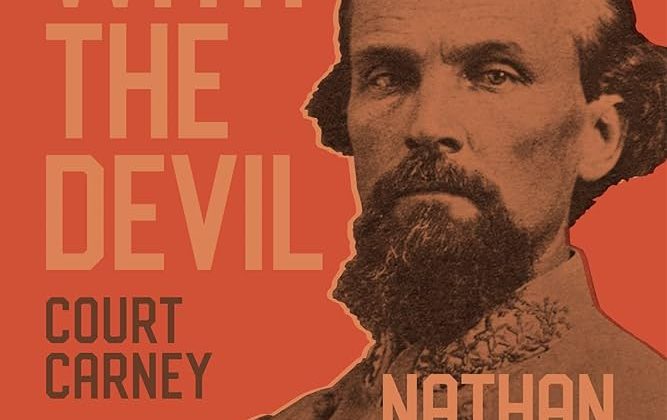

Court Carney is Professor of History at Stephen F. Austin State University. This interview is based on his new book, Reckoning with the Devil: Nathan Bedford Forrest in Myth and Memory (LSU Press, 2024).
JF: What led you to write Reckoning with the Devil?
CC: The story exists in two basic parts. In the late 1990s, I wrote a Master’s Thesis with Gaines Foster at LSU, primarily on the Nathan Bedford Forrest statue in Memphis erected in 1905. I then wrote my dissertation on…jazz in the 1920s, which is a whole other story (and the subject of my first book). But I always liked the Forrest idea, which I eventually went back to in terms of research in the 2010s. The second part of the story relates to the pandemic and consequent shutdown when I finally sat down and began drafting chapters. A lot had changed, though, especially since, in the 2010s, the two main Forrest monuments (in Memphis and Nashville) came down. The book thus had a narrative arc that had not been there in earlier conceptions. I do not recommend the wait-until-something-changes strategy, lol, but my ever-patient editor was thrilled once it all finally came together.
JF: In 2 sentences, what is the argument for Reckoning with the Devil?
CC: The myth and memory of Nathan Bedford Forrest—slave trader, Confederate general, and first leader of the Ku Klux Klan—gives us a complex view of the making and unmaking of Civil War memory through the entwined narratives of racism and violence. Put simply, the story of Forrest’s public memory speaks uniquely to the power of an (often imagined) past to shape present-minded perceptions of what the Civil War meant.
JF: Why do we need to read Reckoning with the Devil?
CC: On one level, this book gives us a molecular look at how Civil War memory actually works—how two statues, in particular, came together and eventually were brought down. On another level, though, this book shows how Forrest drifted through the twentieth century through biographies, novels, advertising, pulp fiction, and film. Much of the middle of the book, in other words, examines how very different people used the idea of Forrest in wildly different ways. Forrest never represented a straightforward array of issues. Instead, the image of Forrest was mutable—constantly shifting to take on whatever current ideas of the Civil War came into vogue over the years. More than most other Civil War figures, Forrest consistently spoke to the ever-fluctuating Now.
JF: Why and when did you become an American historian?
CC: I am not sure how early in life I imagined what a historian even was—though I entered college as a history major. My favorite classes, though, were non-US, and my favorite professor taught Early Modern Europe. He guided me toward graduate school and eventually recommended LSU, where I went. Having said all of that, I am adopted, and it has become more apparent over the years that my interest in history, generally, and the idea of the importance of memory and identity in the crafting of history is clearly a big part of how I have always tended to see the world, regardless of my conscious interests.
JF: What is your next project?
CC: I am finishing up one more Forrest-related project, which will probably wrap up my Forrest era for now. I also have a small, cool book on New Orleans music and myth that materialized from conversations with an editor. After that, I am committing myself to pulling together a monograph on Bob Dylan, which I have been teasing for too long.
JF: Thanks, Court!